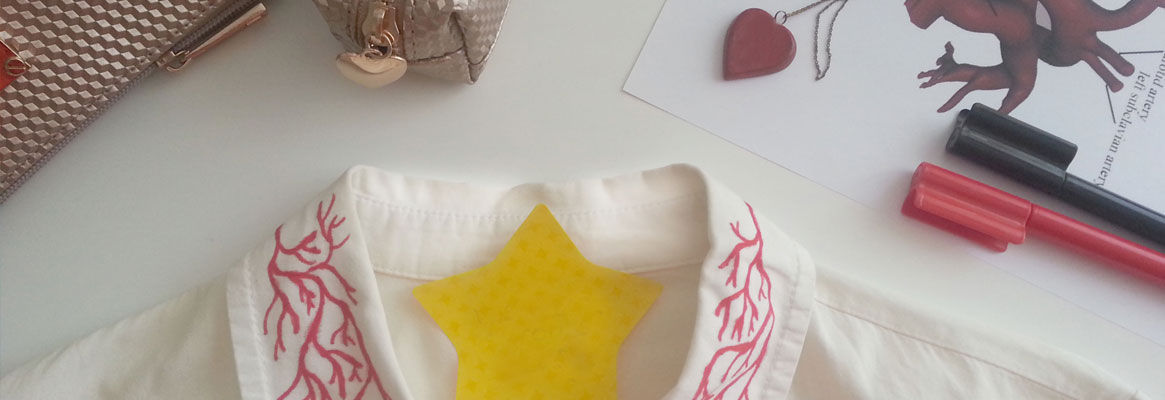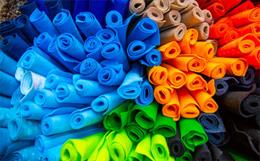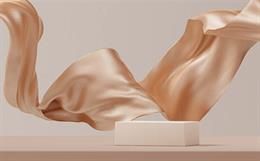Textile Engineering Department, Faculty of Technology & Engineering
The M. S. University of Baroda, Kalabhavan, Baroda-390 001, India.
hir_mak@yahoo.com
ABSRACT
Due to a steadily growing number of patients and considerable diagnostic and therapeutic advances, vascular diseases are becoming more and more important in general and clinical practices. The design and fabrication of synthetic vascular prostheses have been challenging to the area of surgical research over the last four decades.
As vascular grafts must have specific characteristics. Textile structures are usually the materials used for arterial replacement, however they do not always meet all the requirements. The most important aspects of an arterial grafts are porosity, compliance and bio-degradability. A graft should be micro porous to provide a stable anchorage for vascular cells and stimulate cell ingrowth. Most Textile grafts are constructed either of PET (Polyethylene terephthalate) commercial name Dacron or PTEF (Polythetraflouoroethylene) Known as Teflon.
This review article is basically highlighting Design requirements for large as well as small vascular grafts, Different textile structure use for grafts, Latest development in textile graft to improve kinking properties, Tissue grafts and different product available in market to solve cardiovascular problem. It is concluded that the development of vascular grafts for replacing small diameter arteries may be reached by modifying currently available synthetic materials or thru break through procedures and discoveries in the area of tissue engineering.
INTRODUCTION
Due to a steadily growing number of patients and considerable diagnostic and therapeutic advances, vascular diseases are becoming more and more important in general and clinical practices. Today, large diameter arteries are easily replaced, but that is not always the case with small diameter arteries. The design and the fabrication of synthetic vascular prostheses have been challenging to the area of surgical research over the last four decades. Surgeons have been working closely with the medical products and textile industries to develop a successful prosthesis for the replacement of traditional by-pass methods of arteries in patients suffering from vascular disease.
A study from Theta Reports (1), Soft Tissue Implant Technology, examines the market for this revolutionary technology. According to the report, the soft tissue market has two major segments-tissue engineered products, and traditional implants. The tissue-engineering segment holds the most promise for revolutionizing approaches to high performance textiles.
Specifically, the study reports that:
• The market as a whole will grow at an annual rate of up to 20% over the next five Years.
• New technology will make its impact after 2002
• New implants for the cardiovascular segment accounted for 59% of the sales in 1998.
IMPLANTABLE TEXTILES
The natural way to replace a defective body part would be transplantation this is not always possible. Therefore, physicians use an artificial biomedical such as bio textiles, a foreign or synthetic materials or parts used to replace a body parts are referred to as prosthesis. Cardiovascular implants classified under implantable surgical textiles, which basically categorized in three parts.
1. Soft tissue implants
Artificial tendon, ligament, skin, eye contact lenses, hernia repair are categories under soft tissue implants.
2. Hard tissue implants (Orthopedic implant)
Artificial joints, Bones and dental implants are the main area of hard tissue Implants.
3. Cardiovascular implants
Arteries, vascular graft, heart valves, the implantation needed for heart surgery are known as cardiovascular Implants.
Although it depends on specific application, in general, the biological requirements for a satisfactory artificial implant may be stated as follows (2).
(1) Suitable artificial surface for the body cells to easily adhere to and grow on.
(2) Porosity, which determines the rate at which tissue will grow and encapsulate the implant.
(3) Fibre diameter, in general, smaller than the cells for their adherence. Although human tissue is capable of encapsulating objects much larger than fibres, it can better encapsulate the small circular fibre than large irregular cross section fibre.
(4) Bio-degradability or bio-stability depending on the application.
(5) Non- Toxicity, where fiber polymer or fabrication techniques must be non-toxic and fiber should be free of contaminants.
HISTORY OF VASCULAR GRAFTS
Human vessels are difficult to procure and preserve. In the 1940s, early attempts to replace arteries with rigid plastic tubes failed because of the stress concentration at the suture line. This resulted in thrombosis or hemorrhage. Woven textile structures and plastic foams, being more impermeable to blood and more flexible and compliant than rigid plastic tubing, provoked much interest during the 1950s and 1960s .It all started with Drs. Voorhees and Blakemore (3).
1950s: New textile products were tested. Dr. Hufnagel came up with grafts made of Orlon, Dr. Sterling with early grafts made of nylon and later grafts made of Teflon, and Dr. Debakey with grafts made of Dacron. At the same time Drs. Wesolow and Sauvage focused their research on Orlon prostheses. Dr. Edwards was more interested in woven and knitted Teflon prostheses. The 1950s were an important decade. Dacron and Teflon were preferred because other polymers developed excessive loss of strength following the time of implantation.
1952: After a few years of research done by Drs. Voorhees and Blakemore on woven structure, the first prosthesis was implanted on a patient at the Columbia Presbyterian Hospital in New York. The prosthesis was a conduit of Vinyon-N. The patient died 30 minutes after the operation. It was the beginning of a challenging field of research.
1962: Porosity was found important to tissue ingrowth.
1960s to 1970s: Dacron was easier to handle than Teflon so the manufacturing of Teflon stopped, and surgeons were pleased with Dacron. Velour surfaces appeared on the market. The blood cells could be attached on the surface of the graft more easily which facilitated the cell-ingrowth.
1975: A new type of Teflon (ePTFE, polytetrafluoroethylene) appeared. (In 1992, 99% of the synthetic axillofemoral and femoropopliteal grafts were made of this material .)
1978: For non-crimped grafts the use of adhered coils as external support provided a compression resistance. It has become widespread in the 90s. Knitted fabrics were improved to allow less porosity and greater strength.
1980s: Many changes occurred. Knitted grafts were rendered impervious by impregnation with protein fixed chemically to obtain good characteristics of knitted prostheses without the necessity for preclotting. This appeared to be good for carotid-femoral grafts. Molecular biology techniques were applied to the study of the complex interactions of the prosthesis with blood and perigraft tissues.
1990s: Some high performance fabrics developed for a prosthesis that allows rapid healing and that is able to work as a small diameter artery and with adequate elasticity. Also properties such as thickness, permeability (porosity), bursting strength and crimp (elongation) were the basic consideration for a graft designing. For replacement of medium and large diameter blood vessels, Dacron and Teflon have shown to stay patent for more than ten years after implantation. However, for small diameter blood vessels none of the preceding or current graft designs seem to provide a practical solution.
2000 onwards: People are still looking for ideal prosthesis. New product using 3D braids and non-woven structure under investigation. Currently new up coming technology is tissue engineering for which scaffold structures are needed to provide the 3D framework for cell.
VASCULAR DISEASES
Vascular disease is characterized by variations on the structure and geometry of the walls of a blood vessel. Such variations can alter the mechanical properties of the wall, resulting in an increase or decrease in the cross sectional area of the affected vessel. Some most common vascular diseases, which create complications, are (4):
Thrombosis: As shown in figure 1(a), it is a formation or presence of a blood clot inside a blood vessel or cavity of the heart. When these formations become loose from the vascular wall, they can partially or completely block a blood vessel.
Aneurysm: As shown in figure 1(b), it is a ballooning out of the wall of an artery, due to weakening of the wall by disease, injury or an abnormality present at birth. This can cause the wall to rupture, leading to hemorrhage. It can also lead to adverse flow conditions including turbulence, and blood wave phase distortion.
Arteriosclerosis: As shown in figure 1(c), it consists of deposits of fatty substances, cholesterol, cellular waste products, calcium and fibrin (a clotting material in the blood) in the inner lining of an artery. This form of vascular disease alone is the cause of more than 600,000 cardio-vascular related deaths per year in the United States. Some of the most common places for this to occur are the abdominal aorta, iliac, carotid and coronary arteries.
DESIGNING TEXTILE VASCULAR GRAFTS
Vascular grafts must have specific characteristics. Textile structures are usually the materials used for arterial replacement, however they do not always meet all the requirements. The most important aspects of an arterial graft are porosity, compliance, and biodegradability. A graft should be micro porous to provide a stable anchorage for vascular cells and stimulate cell ingrowth. It should be compliant to stimulate the in growing tissue and form a new elastic component of the arterial wall. It should be biodegradable so that the in growing tissue can take over the function of the graft. Some Design consideration for Grafts are (3):
A graft needs to satisfy certain engineering and functional criteria like
• A nonthrombogenic surface,
• Elements to impart compliance and elasticity,
• Design to maintain long-term tensile strength,
• Biocompatibility or ability to be healed by the patient,
• A variety of characteristics to make its widespread application efficacy ous, such as easy handling, suturability, capacity for uniform mass production, shelf storage, repeated sterilization, and availability in appropriate sizes.
Selection of the right type of polymer
Polyester is the most commonly used because it is available in a wide range of linear densities. Polyurethane is another polymer especially used for its elasticity. Mischievous
The type of yarn
Commercial prostheses contain either single or two-ply yarns. These yarns have usually a round cross-section. However, trilobal yarns have been used. The latter provides a larger surface area which makes preclotting easier and faster, but they are more prone to fatigue and mechanical damage.
Type of Fabric
Either the woven Fabric or the knitting Fabric The original commercial prostheses were woven which are still widely used. They are woven in a circular manner, which makes the fabric more regular since there is no seam on any side. Despite their simplicity, plain woven fabrics have the highest number of interlacing and are therefore the most dimensionally stable structures, have a high bursting strength, a good fatigue resistance and a low permeability to water (or blood), which reduces bleeding. The Woven prostheses have the strongest construction, but they are difficult to suture and they have the tendency to fray at the cut ends, also lack compliance and consequently they may be too stiff.
To overcome these disadvantages a knitted prosthesis might be preferable due to better flexibility, compliance and easier to suture. However, they are very porous and have high water permeability. So they need to be preclotted with the patient's blood before implantation. To improve healing a type of knitted prosthesis was developed: the velour prosthesis. The fabric is thicker and has more loops so that ingrowth cells can adhere to the wall more easily. Knitted prostheses are successful for by-pass procedures of the abdominal aorta and peripheral arteries. They have shown good resistance to aneurysm and occlusive diseases. However, they are not well suited for large diameter vessel replacement or locations of high stress because they have a weak construction and are not very dimensionally stable compared to woven prostheses. They have the disadvantage of sometimes getting a permanent radial deformation due to blood flow and pressure, which can cause a mismatch in diameter between the prosthesis and the host artery.
Method of Crimping: The method of crimping can be used to overcome the limited longitudinal stretch of vascular prostheses. Crimp reduces the stress at the suture line and minimizes local fluctuations in blood pressure. Crimping is a heat-set process that has reduced the number of failures due to thrombosis.
VASCULAR GRAFT PROSTHESES
Several types of synthetic and biological prostheses have proven to yield acceptable patency levels in the replacement of blood vessels. Most textile grafts for large and medium artery replacement are constructed either PET (polyethylene terephthalate) commercial name Dacron, or PTFE (polytetrafluoroethylene) commercial name Teflon. On the other hand, for small diameter arteries the graft of preference is the autogenous saphenous vein, which does not provide a permanent solution. Furthermore, when adequate tissue for bypass conduits is lacking, there is no alternative for replacement. Table 1, illustrates the basic manufacturing constructions for textile grafts, knitted and woven, as well as synthetic design construction of polyurethane fibers (used for their less reactive nature to plasma proteins and blood cells). The use of biological grafts is also practiced, and still under research to improve patency levels
GRAFT FAILURE
The implantation of synthetic and biological grafts in the circulatory system yield several types of complications ranging from infection to wall rupture. Textile grafts suffer aneurismal dilatation, fiber breakdown and rupture. Auto grafts experience rapid ageing and limited healing capacities,as well as media hyperplasia. The implantation of with rigid walled grafts in the circulatory system may have detrimental effects on blood wave propagation and local velocity field. Most of the large diameter graft replacements are successful whereas failure occurs very often in small diameter arterial graft replacements. There are four major causes of graft failure:
1. Dilation: Dilation is the most frequent mechanical failure. It occurs around 35 months after implantation. Dilation is a permanent enlargement of the graft diameter due to pulsating stresses. The action of the pressure creates the fatigue of the yarn or the textile structure. All convensional warp knitted graft show a degree of dilation under blood pressure due to polyester yarn re-orientation within the wall structure post implant. Sulzer Vascutek has developed a unique patented Koper Knitted product, Gelsoft™ Plus, a new generation of vascular graft that minimizes the level of dilation by arranged yarn perpandicular to one another on the internal graft surface as shown in Figure 3(a) and (b). This significant development illustrated in figure 4 (w).
2. Suture line failure: Suture failure as showen in figure 5 (a) and (b), which is the deterioration of the suture line, is the next major problem with arterial graft systems. It occurs mostly between 30 and 50 months after implantation. It is due to a mismatch of compliance between the graft materials and the artery or sometimes to the suture material itself.
3. Structural defects (holes, perforations, rents, and slits): Defects are not very common but can cause graft failure, which occurs between 40 and 60 months after implantation. Defects appear during manufacturing or handling and are hard to detect as shown in figure 6 (a) and (b).
4. Bleeding and infection: Bleeding and infection are also rare and occur within the first 10 months. Bleeding occurs either at the suture line or through the interstices of the graft as shown in figure 7 (a) and (b).
With SEALPTFE™, an innovative process is used to coat the external surface of the graft with Sulzer Vascutek's proven hydrolysable gelatin sealant. This significant advance addresses suture hole bleeding, one of the main problems associated with conventional ePTFE. SEALPTFE™, also produces minimal 'sweating', has excellent handling and may be bonded with antibiotic Figure 8 (a) and (b).
NEW DEVELOPMENT IN GRAFTS
New Textile Structure
New technologies are already used to produce 3D braids and nonwoven structures another large field covered by Knitting technology in particular Raschel warp knitting from Karl Mayer .The objective is to developed micro vascular structures with diameter smaller than 3mm. Some of the range of Graft by sulzervascutek is listed in Table 2.
Gelweave™ is a true zero-porosity twill woven polyester graft. It is manufactured using an advanced technique of weaving fully texturised polyester on modern looms. This allows a more consistent weave of fabric with outstanding dimensional stability. Gelweave™ grafts feature excellent handling characteristics, achieved by means of "floating yarns" which create a velour on the surface of the graft. This aids attachment of in growing tissue and healing. Figure 9(a) to(c)
In India recently SITRA has developed woven vascular graft and succeed in vivo study. These graft made from150 denier textured polyester filament with 90 ends/inch x 90 picks/inch, having internal diameter of 10-22 mm and 300 mm length.
Surface modification
Successful graft function depends on a variety of factors, such as, mechanical properties (i.e. porosity), ease of handling, and biocompatibility. Current research is focused on surface modification for biocompatibility of current grafts, development of biodegradable materials for use in grafts, and development of new elastomeric polymers. Figure 10. Shows patency level of vascular graft with and without coating.
Fluoropassivation is a unique and patented surface modification technique allowing fluoropolymer molecules to bond with and completely cover the surface of each fibre within the graft polyester matrix. This produces a new biomaterial, Fluoropassiv™, the first macro porous fluoropolymer. Historically, polyester, and ePTFE have been shown to exhibit equivalent patency in above knee peripheral procedures. Comparative clinical studies are in progress and the patency results with Fluoropassiv™ are therefore expected to be at least as good as those with ePTFE.
Tissue engineering
Many laboratories are attempting to create an alternative to autologous veins for use in coronary artery bypass grafting procedures. Specifically, researchers are either attempting (1) to engineer non-thrombogenic synthetic materials for use as conduits or (2) to tissue engineer living blood vessels from cells and scaffold. In some research laboratories attempting to tissue engineering a vascular graft using a unique matrix-based tubular scaffold and endothelial cells that are ideally isolated from the patient in Figure 11(a). Endothelial cells, which line all blood vessels in the body, should help prevent thrombosis and clotting of the graft. A cross section of the tubular scaffold with a living endothelial cell layer is shown in the histological image in Figure 11(b).
SUMMARY
The properties of vascular grafts produced using current technology do not match those of native arteries. Hence, some aspects of their performance need to be improved. In order to improve current available grafts the following three strategies are being pursued.
• Strategies to improve graft design.
• Modification of surface of existing graft.
• Incorporation of autologous vessel wall cells needed to mimic biological function of native vessel.
Thus vascular grafts having a large field of application for textile, other cardiovascular problem likes replacement of heart valve, knitted bag to stop heart enlargement and also artificial heart made up of textile materials.
REFERENCES
1. Theta Report on soft tissue markets, Report No. 910, November 1999.
2. Wellington sears handbook of Industrial Textiles.
3. Biomedical application in Textile: Artilari Graft
4. Josue C. Raudales, “Design of Small Diameter Vascular Grafts for Arterial Replacment” August 1999.
5. Ms. Hireni R. Mankodi ,” Tissue engineering a new technology“ International conference paper ,Bolton UK 3rd-5th July 2001.
6. Frank K. KO and Cato T. Laurencin, “3-Dimensionia textile scaffolds for tissue engineering”, Textile Asia May 2000, page No. 27-30.
7. Yasuhide Nakayama, Shogo Nishi, Hatsue Ishibashi-Ueda, Takehisa Matsuda, “ Surface Micro architectural design in biomedical applications”, John Wiley & Sons, Inc., October 1999, page No. 520-528.
8. Hireni Mankodi, “Medical Field holds good scope for textiles, The Indian Textile Journal, November 2000, page No. 39-44.
9. Hiromitsu Tsuchida, Brian L. Cameron et al, “ Modified Polytetrafluoroethylene”, Journal of Vascular Surgery, St, Louis, Vol. 16, No. 4, October 1992, page No. 643-650.
10. G. Babatasi, L. Bara et al, “An animal model for the evaluation of graft thrombosis in the acute phase on carbon-lined PTEF prosthesis”, The international Journal of Artificial Organs, Vol.1/ No. 12, 1994, page No. 643-650.
To read more articles on Textile, Fashion, Apparel, Technology, Retail and General please visit http://articles.fibre2fashion.com
To promote your company, product and services via promotional article, follow this link: http://www.fibre2fashion.com/services/article-writing-service/content-promotion-services.asp








